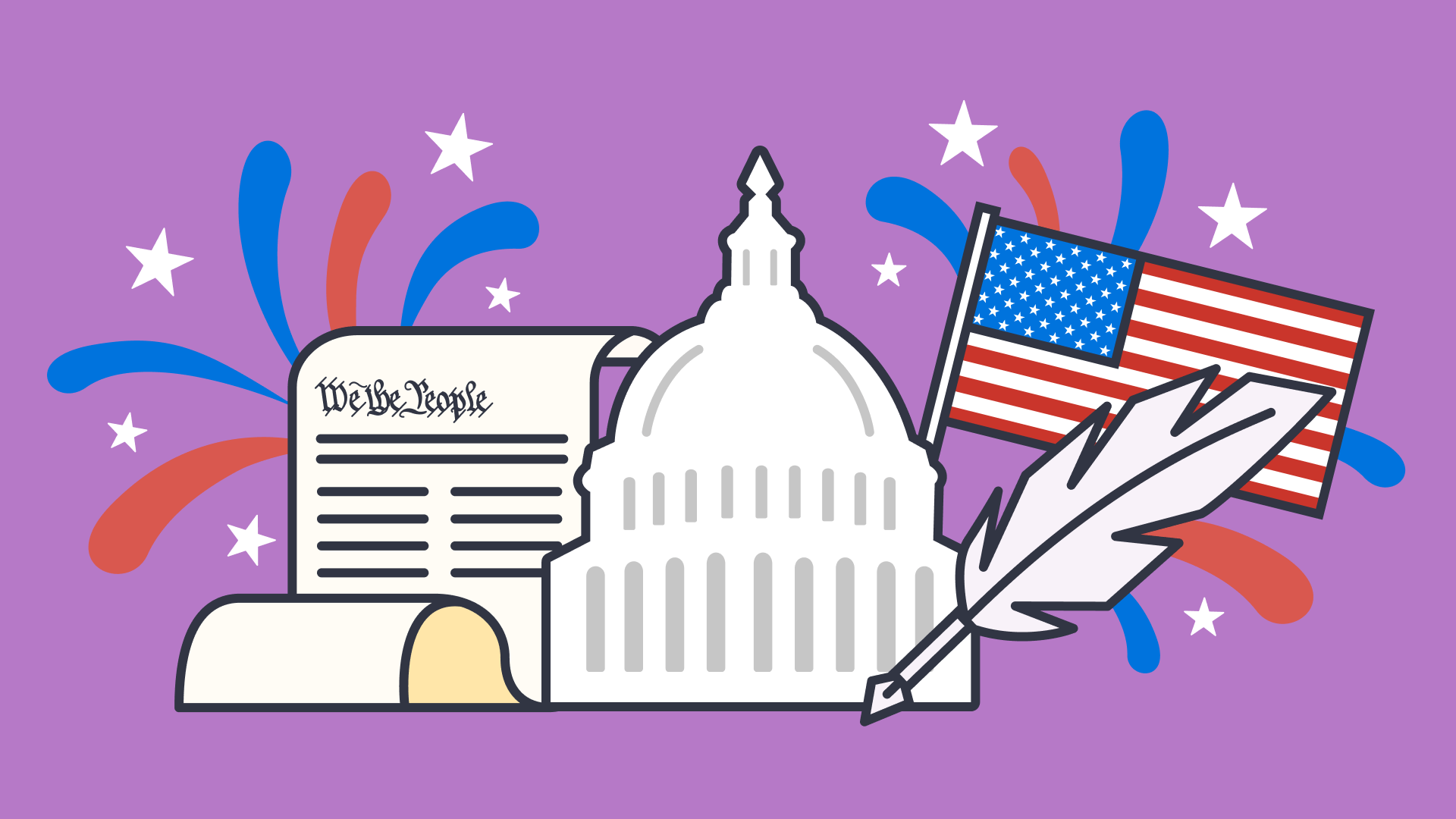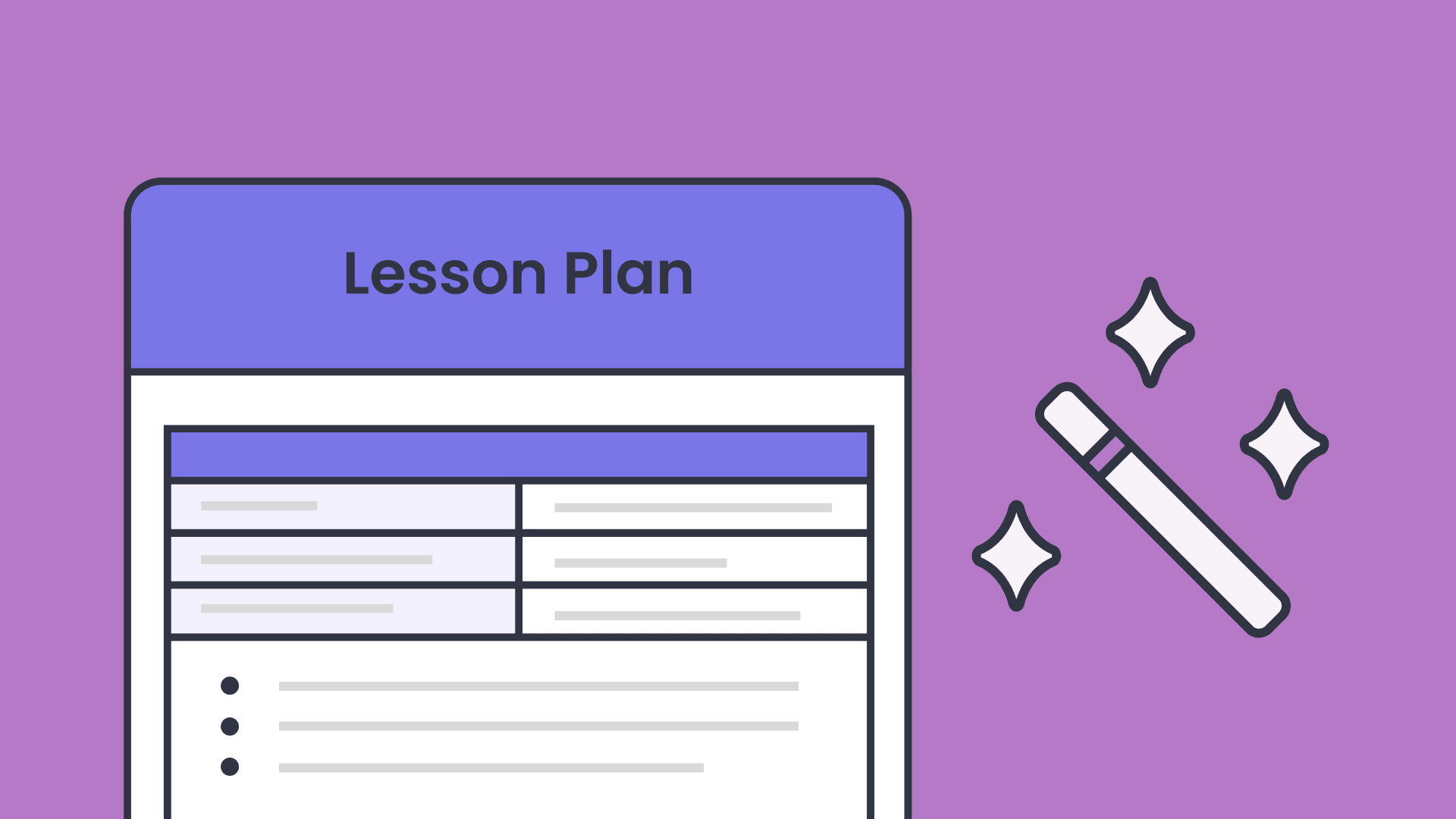Create meaningful Constitution Day lesson plans for students
In this guide
Constitution Day provides educators with an amazing opportunity to engage students in learning about the founding document that shapes American government and law.
Why Constitution Day is important for students
Constitution Day is observed on September 17th to mark the anniversary of the U.S. Constitution being signed in 1787.
Understanding the Constitution is important because it empowers students with knowledge about both their rights and responsibilities as a citizen of the United States of America. It also helps them develop a deeper appreciation for the democratic principles that govern the nation.
Incorporating Constitution Day lesson plans can foster civic engagement, encourage critical thinking, and develop empathy for various groups who had differing experiences throughout American history. Exploring the complexity and ambiguity found in this document will give students the opportunity to make judgments and apply foundational principles to modern events.
It is easy to overlook the role of the Constitution with the pace of modern day life but it is crucial for students to recognize the role this document plays in every aspect of society.
Helping students understand the Constitution will ensure that it is more than just words on a piece of paper and continues to provide stability in a free and democratic society.
Interactive activities to bring the Constitution to life
The wording and ideas from a document written over two centuries ago can create a major barrier to understanding. Including interactive classroom activities for Constitution Day creates a more engaging environment that allows students to connect with these foundational democratic principles in a more personal manner.
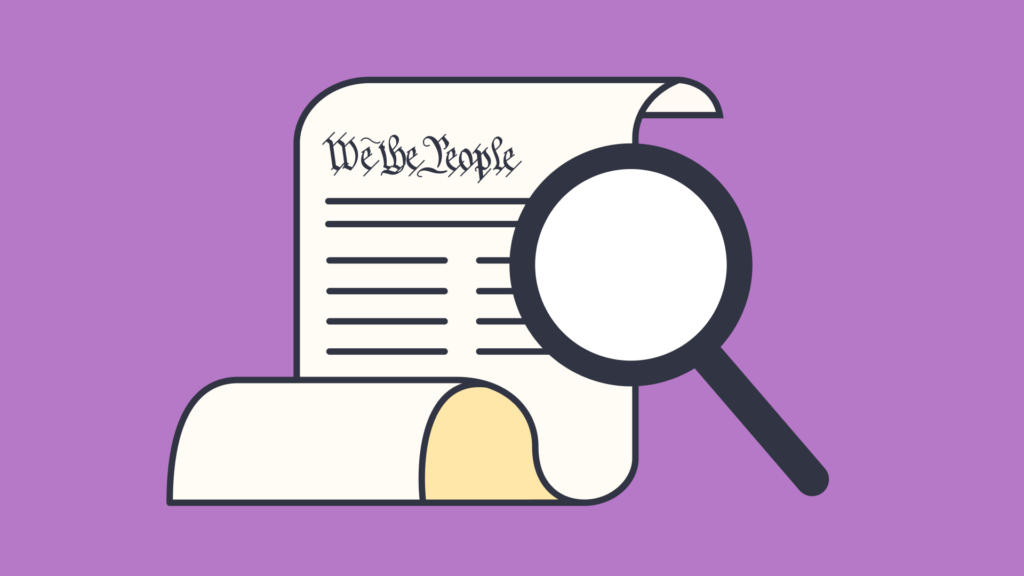
1) Scavenger Hunt
Although the Constitution is a relatively short document considering it outlines the government system of the United States, it is still a pretty tough read for students in the 21st century. Instead of having students read the entire document, you can create a game where students find critical elements included in the Constitution to avoid burnout.
- Create a list of questions about topics, rights, and guidelines written in the Constitution:
- Where is the right to bear arms listed?
- How old do you have to be to serve as president? and/or
- Which branch of government writes laws?
- Have students form small groups and compete against other groups to try and find the correct information the fastest.
- Make sure students get the correct information and also note the exact location where they found it in the Constitution.
- Let the first team to finish share their results with the class and have the other groups try to identify any mistakes made.
- If the group answers every question correctly then they win.
If they make a mistake, the group that recognized it takes over and tries to complete the rest of the questions,
This activity can be done with or without the use of technology. I have found value in both methods with the biggest difference being the amount of time needed to complete it. If you restrict technology usage then it is probably better to use a shorter list.
There are numerous ClickView videos you can use for this activity but I think The Constitution from the Bill of Rights: Homework Help series provides the best overview before students dive in.
2) Political persuasion
A lesser recognized but significant aspect of the Constitution was the work required in order to ratify the document after it was written.
This process represents one of the first and most effective marketing campaigns in American political history. This activity will put students in the role of proponents of the Constitution and give them the opportunity to practice their persuasion skills.
- Start by having students watch The Federalist Papers. Allow them to go online to conduct additional research about the perspective of Federalists.
- In pairs, have students create a Federalist campaign aimed at gaining support for the Constitution using modern technology. Allow students to use videos, memes, and social media posts to argue in favor of the Constitution.
- Remind students to be creative and persuasive but to stay true to the specific arguments the Federalists were making.
- Allow each pair to present their final product to the rest of the class and discuss which ones were the most effective.
A fun way to extend this activity if you have the time is to have students play Race to Ratify. This game includes detailed arguments from different perspectives surrounding the ratification of the Constitution. It also serves as a good reminder that democracy is messy and disagreements are inevitable in a free society.
Engaging discussions and debates on constitutional principles
In any political climate you can turn on the news or check out social media threads and see Americans vigorously debating the meaning of the Constitution and how it should be applied to modern day situations. It is remarkable how long the Constitution has endured given the enormous societal changes that have occurred since it was written.
Creating a safe and engaging environment for students to participate in these discussions will help them develop essential skills that protect a healthy democracy filled with contrasting opinions.
Before you start on any of the ideas below emphasize to students that they are debating principles and policies rather than personal beliefs.
1) The Electoral college
One of the most difficult concepts for students to understand in a Civics class is the concept of the Electoral College. Electing the president of the United States is a complex process that a majority of Americans believe has outlived its usefulness.
- Start by asking students to get into groups and create a step by step process for how they believe a president is elected.
- Allow groups time to share their ideas with the rest of the class.
- Show students The Electoral College: How the U.S. Presidency is Won.
- Give groups time to update and revise the process they outlined in step #1.
- Next, assign half of the class to develop arguments for why the Electoral College is a good idea and should be kept in place. Have the other half of the class argue why it should be replaced by a simple majority vote.
- Conduct a full class debate by having each side present points and counterpoints that represent their assigned view.
At the end of the debate allow students to vote on the perspective that best represents their personal views.
To help students visualize the impact of the Electoral College and to see how voting patterns have evolved throughout American history, have them explore the PBS Electoral Decoder website. While they go through this site, have them take notes on any questions they have or trends they notice so that you can discuss them as a class afterwards.
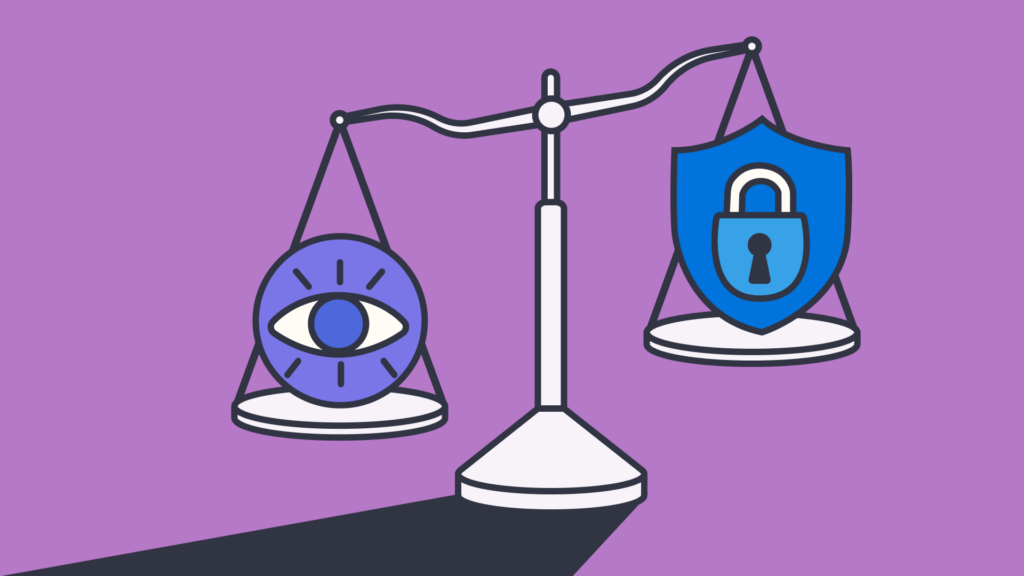
2) Balancing privacy and security
This issue represents one of the most consistent debates throughout U.S. history. Both privacy and security are core principles of American democracy but there is not a clear distinction of when and where the balance between the two lies.
Make this topic relevant and engaging by focusing on search and seizure rights of students in schools.
- Begin by asking students what they know about protections in the Constitution regarding the privacy of citizens.
- Encourage students to reference personal experiences or examples they have seen in the media.
- Show students The Fourth Amendment and discuss how it protects citizens from the government.
- Ask the class whether or not the feel that these protections should apply to minors while at school
- Have students get into small groups and give each group a hypothetical scenario to discuss and determine if the Fourth Amendment applies.
- A teacher going through a student’s backpack looking for stolen property,
- A school requiring a student to take a drug test,
- An administrator searching a student’s phone looking for evidence of bullying.
- Go around the room and have each group describe their scenario and the different opinions brought up during their discussion.
- Allow the rest of the class to comment or question on each scenario.
- Next, show students the New Jersey v. TLO case and have them look for information that could apply to the scenario they were assigned.
After the video, discuss how the Fourth Amendment protects students and why a school’s responsibility to create a safe learning environment may reduce individual privacy at times.
A great way to extend this discussion beyond the school setting is to dive into the Patriot Act. Students will be able to see how catastrophic events can shift the balance between privacy and security.
Encourage students to conduct some background research on the legislation and then discuss whether they feel the government went too far after 9/11 in the name of security.
3) Executive Orders
The U.S. Constitution was designed with three branches of government, each responsible for different areas of governance in order to create a system of checks and balances.
Executive orders represent a somewhat lesser known and controversial ability given to the presidency that can disrupt the balance of power among the branches.
- In small groups or individually, have students write an executive order they would enact if they were president.
- Ask for volunteers to share their ideas with the class and then provide time for their classmates to ask questions or comment on the impact that executive order could have on American society.
- Encourage students to reference principles outlined in the Constitution that could be threatened by the executive orders they are hearing.
- Conclude the discussion by having students create a list of pros and cons for using executive orders.
- How could they be used to undermine the intentions of the Framers?
- When might they be necessary to protect America and enact important changes?
If you feel this topic is too broad or that your students would benefit from a more concrete historical example, then consider using Korematsu v. United States: Was Internment Legal?
Japanese Internment represents one of the greatest constitutional crises in American history. Debating this topic will help students understand how powerful current events and emotions can be on the interpretation of the Constitution.
Fun projects to explore the Bill of Rights and amendments
Exploring the Bill of Rights and other amendments is one of the best ways to make teaching Constitution Day directly applicable to your students’ lives.
Much of the Constitution can feel so abstract and disconnected to their daily experience so focusing on these specific rights helps students better appreciate the significance of the Constitution.
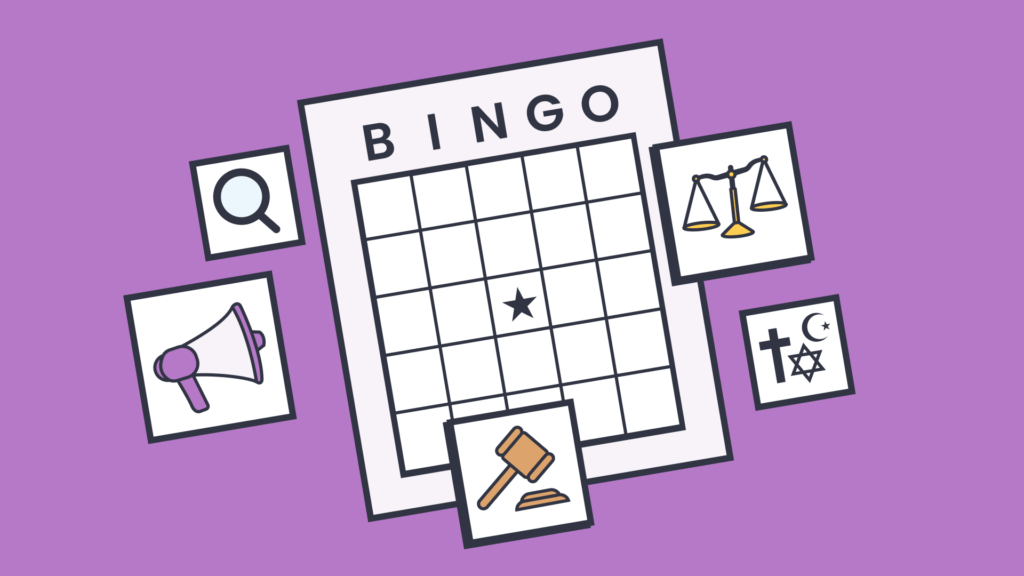
1) Bill of Rights Bingo
The Bill of Rights lends itself to a lot of really fun and engaging activities but it is critical to go beyond the original text and encourage students to apply the rights to specific examples in society. This extra step adds relevance and ensures a more meaningful learning experience.
- Create a list of hypothetical scenarios that involve a specific amendment from the Bill of Rights.
- An adult purchasing a gun.
- A reporter publishing an article about a politician.
- Hand out a printed Bingo card that is filled with the 10 amendments. One amendment per box.
- Read the scenarios aloud and have students cross off the amendment they think the scenario most closely corresponds with.
- When the first student yells bingo, repeat the scenarios and have them state which amendment they chose for each one.
- If a mistake is made, continue the game.
- If all answers are correct, crown that student the winner.
Every time I have used this activity, students have asked to play additional rounds so I highly recommend creating enough scenarios to keep the game going.
To add an extra challenge, consider using actual Supreme Court cases that you have already covered in class as the scenarios (e.g. Mapp v. Ohio).
2) Amendment art
This activity can be done in a variety of mediums but the goal is to translate vague and ambiguous language into concrete visual examples.
Creating visuals to represent the core principles of each amendment allows students to tap into their creativity and determine how to best simplify complex ideas.
- Assign each of the amendments to individual students or allow them to work in pairs.
- Consider breaking up some of the bigger amendments into different parts to allow for more accurate coverage (e.g. 1st- freedom of speech, press, and religion).
- Have students create a visual that clearly represents the right or protection guaranteed by their amendment.
- This can be done digitally and compiled into a class slideshow/gallery or on paper and presented as a collage on the wall.
- Depending on resources and the artistic abilities of your students, allow them to use online images to help portray their concept.
- When the artwork is complete, have students view the work of their classmates and write down what they think each amendment is about based on the image.
- Review each image as a whole class and ensure each student understands the meaning of each amendment.
Allow the creator to explain their decision making for each amendment.
An incredibly helpful resource for students while working on this project is the series Bill of Rights: Homework Help. There are a variety of videos that explain the various amendments and provide real word examples involving these rights.
3) Create a New Amendment
When considering Constitution Day lesson plans, it is important to include how this foundational document has changed over time.
We celebrate the stability of American democracy but students should also know that it was designed to be changed when society deemed it was necessary.
This activity will put students in the role of a politician or activist looking to amend the Constitution.
- Start the activity by having students watch Amending the Constitution to learn about the process of making changes to this document.
- Have students get into small groups and draft an amendment they believe should be added to the Constitution.
- Encourage them to use clear language and also include an argument for how/why the United States would be better if this was ratified.
- Give each group time to propose and explain their amendment. Allow time for questions or debate before holding a class vote.
- Allow the class to vote on each proposed amendment. Tell students they must convince ¾ of the class in order to have a successful amendment.
A nice way to conclude this activity is to have a class discussion about why the Framers made it possible to change the Constitution but very hard to do so. Have students share why they think the Framers chose this design.
Encouraging student reflections on the Constitution’s role today
Studying the historical circumstances surrounding the Constitution is important but falls short when developing classroom activities for Constitution Day.
Students need to understand and appreciate the role the Constitution has on daily life. When this happens, individuals are more likely to ensure that the words and ideals listed in this foundational document are actively protected.
One simple way to encourage students to reflect on how the Constitution impacts their lives in the 21st Century is to ask them to write a short essay about what this document means to them.
They should include the ideals and principles they feel are the most important as well as any personal experiences they have had that are influenced by the word in the Constitution.
Encourage students to share their essays with each other and people outside of your class as a way to honor the foundation of American democracy.
I also like to use a class discussion so students have the opportunity to share their opinions about the Constitution and how it applies to various current events that have meaning to them.
The following questions will help you get a meaningful conversation going about contemporary issues involving the Constitution:
- How would the Constitution have differed if women and minorities were included at the Constitutional Convention?
- What groups of people are still fighting for equal protection under the Constitution today?
- Do you think it is time for a brand new Constitution in the United States? Why or why not?
- What steps could be taken to make sure more Americans understood their rights and the ideas outlined in the Constitution?
- What behaviors or actions can Americans do to honor the Constitution and what it stands for?
A healthy democracy requires active and informed participation from its citizens. Classroom activities for Constitution Day can go a long way to make sure the next generation continues working on a more perfect union. Constitution Day lesson plans should be in every teacher’s schedule no matter what age or subject is being taught. There are so many different angles and approaches that can be utilized to study this foundational document. No matter which approach you take, helping students understand that they play a role in continuing the mission established by a small group of men over two centuries ago is a vital component of civic engagement.

Nick Schwab
briefcase iconLearning Experience Designer
Nick combines his background in psychology, education and design to create physical and digital experiences that empower, engage, and excite learners. His passion lies in constantly developing new learning pathways for students that challenge the status quo in education.
Other posts
Want more content like this?
Subscribe for blog updates, monthly video releases, trending topics, and exclusive content delivered straight to your inbox.

